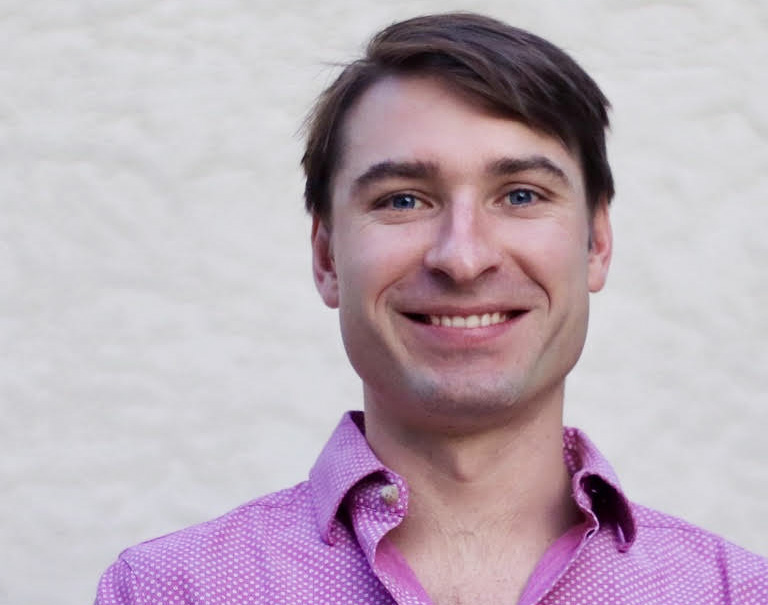
On the Horizon
UC Santa Barbara postdoctoral researcher Henry Maxfield has been named a winner of the Breakthrough Foundation’s 2021 New Horizons Prize in Fundamental Physics. He, along with fellow early-career researchers Ahmed Almheiri at the Institute for Advanced Study, Netta Englehardt at Massachusetts Institute of Technology and Geoff Penington at UC Berkeley, were awarded $100,000 “for calculating the quantum information content of a black hole and its radiation.”
“I feel lucky to have an honor like this,” said Maxfield, who came to UC Santa Barbara as a DeBenedictis Postdoctoral Fellow, supported by a private donation to the UCSB Department of Physics. “It’s wonderful to be part of a community that’s really positive and collaborative and very open, and I feel lucky to have been in the right place at the right time.”
The right place and right time happened to be UC Santa Barbara, where Maxfield’s network included Englehardt and Almheiri, who received their doctorates under the guidance of UCSB physics professors Gary Horowitz and Joe Polchinski, respectively. The trio’s paper, co-written with professor Donald Marolf in 2019, takes us one step closer to resolving the black hole information paradox, one of the most intriguing physics mysteries of our time.
“I am honored and delighted to congratulate Henry Maxfield on his selection for the New Horizons Prize,” said UC Santa Barbara Chancellor Henry T. Yang. “This prestigious honor is a testament to the excellence and significance of his research on quantum processes in black holes and the bright promise of his research career. Our campus community and I take great pride in his achievement.”
Originally from the United Kingdom, Maxfield received his doctorate at Durham University in 2015, followed by a Simons Foundation postdoctoral fellowship at McGill University in Canada. In 2018, he arrived at UC Santa Barbara with his expertise in the boundary between high energy physics and gravitational physics.
It’s from that mysterious area — where relativity and quantum mechanics don’t quite mesh — that the question of what happens to information in a black hole emerges.
“It goes back to this problem in the 1970s that Stephen Hawking discovered,” Maxfield explained. Black holes — those extremely dense, high-gravity voids in space-time — aren’t completely “black.”
“They gently glow and radiate,” he said. And as they do that, the black holes evaporate.
But one element of Hawking’s calculations, Maxfield continued, is that this state of “Hawking radiation” destroys information about the original quantum state of the material drawn into the hole.
“This is very different from what quantum mechanics does,” Maxfield said. “In principle, the laws of physics are completely reversible.” In other words, information about the material’s original quantum state should exist in some form. “So there was this conflict that quantum mechanics behaves one way and gravity seems to behave another way.”
The path to their calculation was not a straight shot, but slightly off to the side, as is often the case with physics.
“We were interested in something closely related, which was trying to identify where the information is located,” Maxfield said. Armed with recent theoretical advances, exciting discussions and enlightening seminars and presentations, such as those at UCSB’s Kavli Institute for Theoretical Physics, the researchers pursued their calculation — Maxfield describes it as “a modification to Hawking’s calculation” — broadening it to include a method for quantifying the information.
The result? A calculation about how much information is stored in a black hole as it evaporates, and the finding that the amount of information indeed decreases over time.
“So there’s that early radiation when the black hole is still young that doesn’t really carry any information,” Maxfield said. “But once the black hole has shrunk away to half its size — it takes a very long time — the quantum information starts coming out. This is what you’d expect from quantum mechanics.”
The calculation that Maxfield, Englehardt, Almheiri and Geoff Penington (who was concurrently doing very similar work at Stanford) made is but a tip of the iceberg.
“It doesn’t mean that we’ve completely understood everything,” Maxfield said. “But it is the biggest clue we’ve had for a really long time as to how this tension gets resolved.”
“They found that the information is coming out, even if they didn’t have all the reasons why it comes out,” Marolf commented. “But the idea is that this is a first step. If you have a way of performing that calculation, you should be able to open that calculation up and figure out what the physical mechanism is. This calculation is something we expect is going to give us insight into quantum processes in black holes and how information comes out of them.”
Winners of the 2021 Breakthrough prizes — dubbed “the Oscars of science” — are honored at a gala awards ceremony, where the awards are presented by superstars of movies, sports and tech entrepreneurship. Due to the global pandemic, the ceremony has been postponed until March 2021.



